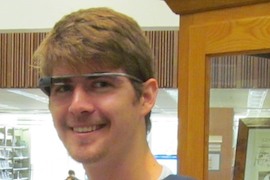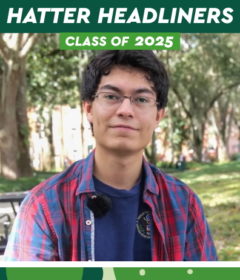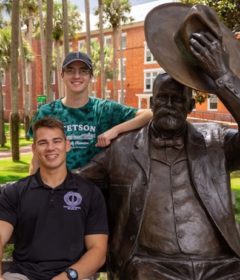Innovation: A New “Lens” for Research

![Lites[3]](https://www2.stetson.edu/today/wp-content/uploads/2015/11/Lites3-400x266.jpg)
Last year, Stetson student Jacob Lites won the use of one Google Glass in the student competition held by the Library. Lites used it for his senior research project on “The Internet of Things,” and developed an app that allowed the wearer to monitor various things in the home, including temperature, light and particles of dust in the air.
Joe Woodside, D.B.A., assistant professor of Business Intelligence and Analytics, won the use of the Google Glass for faculty in 2014, for his project on wearable technology.
Google Glass is a technology with boundless opportunities for improving the world. From the same laboratory working on driverless cars, Google X released Glass to 8,000 early adopters in 2013. The optical head-mounted display allows wearers to interact with the world and the Internet simultaneously, using a simple touchpad or voice commands. Various uses of the product today have included live reporting in the field of journalism, wearable health records that allow doctors to contribute to patients’ files during appointments, as well as broadcast live surgeries to medical students around the world.
In fact, for the viewers of the popular television show, “America’s Got Talent,” the personal story of the young dancer, Benjamin Yonattan, involved Google Glass. Yonattan, a registered blind person, was able to see shapes rather than just darkness with the help of Glass. Currently Yonattan is able to dance on stage without difficulty using Glass. In these and other ways, Google Glass has allowed the ability to create countless advances in the ways people live and experience the world.
At Stetson, Martin wants to know how students and faculty would use Google Glass to contribute to the university’s learning and teaching mission. The duPont-Ball Library is accepting proposals through Friday, Dec. 11, for innovative project ideas that would utilize Google Glass in the research. Due to its competitive nature, the project idea of only one student and only one faculty or staff member will be chosen, according to the rules outlined in the application form, found online at Stetson University’s duPont-Ball Library. Projects can be scholarly or artistic in nature, and all current Stetson students, faculty and staff are eligible to apply.
“I have been quite impressed with the quality of project proposals thus far,” said Martin. “We encourage many Hatters to submit an application as this is a great opportunity to use a limited availability technology, and get the most out of your time at Stetson University.”
By Kerstin Cook



